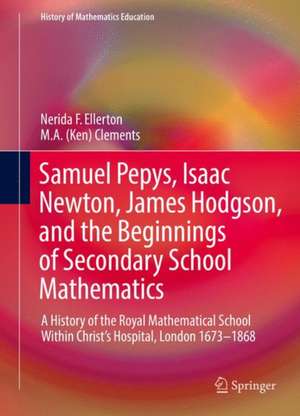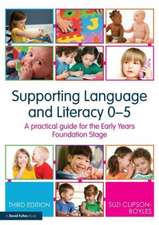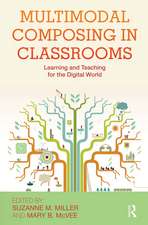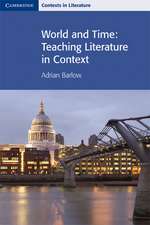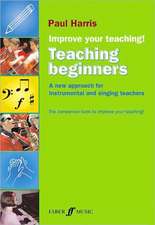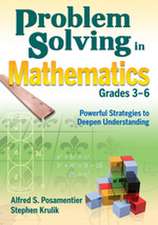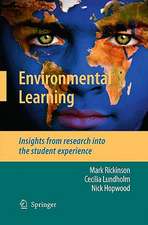Samuel Pepys, Isaac Newton, James Hodgson, and the Beginnings of Secondary School Mathematics: A History of the Royal Mathematical School Within Christ’s Hospital, London 1673–1868: History of Mathematics Education
Autor Nerida F. Ellerton, M.A. (Ken) Clementsen Limba Engleză Hardback – 9 mar 2017
This book tells one of the greatest stories in the history of school mathematics. Two of the names in the title—Samuel Pepys and Isaac Newton—need no introduction, and this book draws attention to their special contributions to the history of school mathematics. According to Ellerton and Clements, during the last quarter of the seventeenth century Pepys and Newton were key players in defining what school mathematics beyond arithmetic and elementary geometry might look like. The scene at which most of the action occurred was Christ’s Hospital, which was a school, ostensibly for the poor, in central London. The Royal Mathematical School (RMS) was established at Christ’s Hospital in 1673.
It was the less well-known James Hodgson, a fine mathematician and RMS master between 1709 and 1755, who demonstrated that topics such as logarithms, plane and spherical trigonometry, and the application of these to navigation, might systematically and successfully be taughtto 12- to 16-year-old school children. From a wider history-of-school-education perspective, this book tells how the world’s first secondary-school mathematics program was created and how, slowly but surely, what was being achieved at RMS began to influence school mathematics in other parts of Great Britain, Europe, and America.
The book has been written from the perspective of the history of school mathematics. Ellerton and Clements’s analyses of pertinent literature and of archival data, and their interpretations of those analyses, have led them to conclude that RMS was the first major school in the world to teach mathematics-beyond-arithmetic, on a systematic basis, to students aged between 12 and 16.
Throughout the book, Ellerton and Clements examine issues through the lens of a lag-time theoretical perspective. From a historiographical perspective, this book emphasizes how the history of RMS can be portrayed in very different ways, depending on the vantage point from which the history is written. The authors write from the vantage point of international developments in school mathematics education and, therefore, their history of RMS differs from all other histories of RMS, most of which were written from the perspective of the history of Christ’s Hospital.
| Toate formatele și edițiile | Preț | Express |
|---|---|---|
| Paperback (1) | 647.40 lei 43-57 zile | |
| Springer International Publishing – 18 iul 2018 | 647.40 lei 43-57 zile | |
| Hardback (1) | 655.13 lei 43-57 zile | |
| Springer International Publishing – 9 mar 2017 | 655.13 lei 43-57 zile |
Preț: 655.13 lei
Preț vechi: 770.73 lei
-15% Nou
Puncte Express: 983
Preț estimativ în valută:
125.40€ • 136.26$ • 105.40£
125.40€ • 136.26$ • 105.40£
Carte tipărită la comandă
Livrare economică 21 aprilie-05 mai
Preluare comenzi: 021 569.72.76
Specificații
ISBN-13: 9783319466569
ISBN-10: 3319466569
Pagini: 314
Ilustrații: XXIV, 325 p. 36 illus., 32 illus. in color.
Dimensiuni: 178 x 254 x 21 mm
Greutate: 0.83 kg
Ediția:1st ed. 2017
Editura: Springer International Publishing
Colecția Springer
Seria History of Mathematics Education
Locul publicării:Cham, Switzerland
ISBN-10: 3319466569
Pagini: 314
Ilustrații: XXIV, 325 p. 36 illus., 32 illus. in color.
Dimensiuni: 178 x 254 x 21 mm
Greutate: 0.83 kg
Ediția:1st ed. 2017
Editura: Springer International Publishing
Colecția Springer
Seria History of Mathematics Education
Locul publicării:Cham, Switzerland
Cuprins
Mathematics in the Christ’s Hospital Curriculum Before 1673.- Mathematics Beyond Arithmetic—Expanding the Domain of School Mathematics.- Stars in the RMS Firmament 1673–1798.- Years of Struggle for RMS 1673–1708.- Developments in RMS Curricula 1673–1798.- RMS Comes of Age 1709–1755: The Hodgson Era.- William Wales: RMS Master 1776–1798.- Redefining School Mathematics at Christ’s Hospital 1800–1868.- An Appropriate Theoretical Lens: Lag Time.- The Importance of the Royal Mathematical School in the History of School Mathematics.-
Recenzii
“This book is, philosophically and mathematically, a major work of the seventeenth century, and initiates a mathematical research development: new notations, new problems, invention of analytical geometry, etc.” (Pierre Lamandé, Mathematical Reviews, February, 2018)
Notă biografică
Nerida F. Ellerton has been Professor within the Mathematics Department at Illinois State University since 2002. She holds two doctoral degrees—one in Physical Chemistry and the other in Mathematics Education.
Between 1997 and 2002 Nerida was Dean of Education at the University of Southern Queensland, Australia. She has taught in schools and at four universities, and has also served as consultant in numerous countries, including Australia, Bangladesh, Brunei Darussalam, China, Malaysia, the Philippines, Thailand, the United States of America, and Vietnam. She has written or edited 16 books and has had more than 150 articles published in refereed journals or edited collections. Between 1993 and 1997 she was editor of the Mathematics Education Research Journal, and between 2011 and 2015 she was Associate Educator of the Journal for Research in Mathematics Education.
In recent years Nerida has concentrated her research efforts in two areas—the history of schoolmathematics and problem posing in mathematics education. In 2012, 2014, and 2015, respectively, Springer published the 223-page Rewriting the History of School Mathematics in North America 1607–1861, the 367-page Abraham Lincoln’s Cyphering Book and Ten other Extraordinary Cyphering Books, and the 204-page Thomas Jefferson and his Decimals: Neglected Years in the History of U.S. School Mathematics. She jointly authored each of those books with M. A. (Ken) Clements.
In 2015 Springer published a 567-page edited collection on problem posing which was jointly edited by Florence Mihaela Singer, Nerida, and Jinfa Cai. In 2015 Nerida received the outstanding researcher award of the College of Arts and Science at Illinois State University.
Ken has authored or edited 32 books and over 200 articles on mathematics education, and is honorary life member of both the Mathematical Association of Victoria and the Mathematics Education Research Group of Australasia. During recent years Springer has published four books on the history of school mathematics jointly authored by Ken and his wife, Nerida Ellerton.
In October 2015 Ken delivered a “distinguished lectureship” presentation for the College of Arts and Sciences at Illinois State University.
Between 1997 and 2002 Nerida was Dean of Education at the University of Southern Queensland, Australia. She has taught in schools and at four universities, and has also served as consultant in numerous countries, including Australia, Bangladesh, Brunei Darussalam, China, Malaysia, the Philippines, Thailand, the United States of America, and Vietnam. She has written or edited 16 books and has had more than 150 articles published in refereed journals or edited collections. Between 1993 and 1997 she was editor of the Mathematics Education Research Journal, and between 2011 and 2015 she was Associate Educator of the Journal for Research in Mathematics Education.
In recent years Nerida has concentrated her research efforts in two areas—the history of schoolmathematics and problem posing in mathematics education. In 2012, 2014, and 2015, respectively, Springer published the 223-page Rewriting the History of School Mathematics in North America 1607–1861, the 367-page Abraham Lincoln’s Cyphering Book and Ten other Extraordinary Cyphering Books, and the 204-page Thomas Jefferson and his Decimals: Neglected Years in the History of U.S. School Mathematics. She jointly authored each of those books with M. A. (Ken) Clements.
In 2015 Springer published a 567-page edited collection on problem posing which was jointly edited by Florence Mihaela Singer, Nerida, and Jinfa Cai. In 2015 Nerida received the outstanding researcher award of the College of Arts and Science at Illinois State University.
M. A. (Ken) Clements’ masters and doctoral degrees were from the University of Melbourne, and at various times in his career he has taught, full-time, in primary and secondary schools, for a total of 15 years. He has taught in six universities, located in three nations, and since 2005 has been Associate Professor (2005–2006) and then Professor (2007–present) within the Mathematics Department at Illinois State University.
Ken has served as a consultant and as a researcher in Australia, Brunei Darussalam, China, India, Malaysia, Papua New Guinea, South Africa, Thailand, the United Kingdom, the United States of America, and Vietnam. He served as co-editor of the three International Handbooks of Mathematics Education—published by Springer in 1996, 2003 and 2013—and, with Nerida Ellerton, co-authored a book on mathematics education research which was published by UNESCO in 1996.
Ken and Nerida plan to return to their homeland, Australia, in 2017, where they expect to resume their work as co-directors of their Australian Heritage Education Museum—which is in Toowoomba, in the state of Queensland. The Museum will have wide-ranging themes, covering areas such as sport, music, sewing, technologies, mathematics, language, science, geography, history, colonialism, the influence of America on education in Australia, British influences on Australian education, one-room schoolhouses, Kindergarten, primary schools, secondary schools, tertiary education, distance education, and equity and educational opportunities.
Textul de pe ultima copertă
This book tells one of the greatest stories in the history of school mathematics. Two of the names in the title—Samuel Pepys and Isaac Newton—need no introduction, and this book draws attention to their special contributions to the history of school mathematics. According to Ellerton and Clements, during the last quarter of the seventeenth century Pepys and Newton were key players in defining what school mathematics beyond arithmetic and elementary geometry might look like. The scene at which most of the action occurred was Christ’s Hospital, which was a school, ostensibly for the poor, in central London. The Royal Mathematical School (RMS) was established at Christ’s Hospital in 1673.
It was the less well-known James Hodgson, a fine mathematician and RMS master between 1709 and 1755, who demonstrated that topics such as logarithms, plane and spherical trigonometry, and the application of these to navigation, might systematically and successfully be taughtto 12- to 16-year-old school children. From a wider history-of-school-education perspective, this book tells how the world’s first secondary-school mathematics program was created and how, slowly but surely, what was being achieved at RMS began to influence school mathematics in other parts of Great Britain, Europe, and America.
The book has been written from the perspective of the history of school mathematics. Ellerton and Clements’s analyses of pertinent literature and of archival data, and their interpretations of those analyses, have led them to conclude that RMS was the first major school in the world to teach mathematics-beyond-arithmetic, on a systematic basis, to students aged between 12 and 16.
Throughout the book, Ellerton and Clements examine issues through the lens of a lag-time theoretical perspective. From a historiographical perspective, this book emphasizes how the history of RMS can be portrayed in very different ways, depending on the vantage point from which the history is written. The authors write from the vantage point of international developments in school mathematics education and, therefore, their history of RMS differs from all other histories of RMS, most of which were written from the perspective of the history of Christ’s Hospital.
Caracteristici
Presents a history of the first secondary school mathematics program in the world Includes an analysis of pertinent literature and of archival data from major archival collections in UK and USA Highlights Samuel Pepys' and Isaac Newton's special contributions to the history of school mathematics Includes supplementary material: sn.pub/extras
